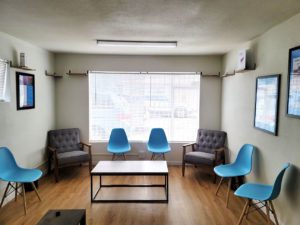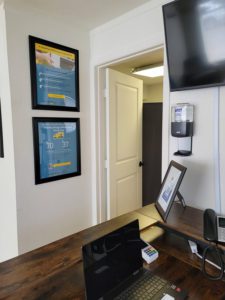Parenting is perhaps one of the most challenging yet rewarding journeys in life. From the moment a child is born, parents are entrusted with the responsibility of nurturing and guiding them into adulthood. However, amidst the countless parenting advice and societal expectations, many parents often find themselves overwhelmed and unsure of the best approach.
And with the countless parenting styles you may be seeing in other parents, it’s easy to become confused about which styles are actually best for your child’s well-being– especially when it comes to the child’s cognitive and behavioral well-being.
Here are five common mistakes parents tend to make when teaching good behavior to their children:
Many parents resort to punishment, such as yelling, shaming, spanking, or criticizing, as their go-to method for correcting misbehavior. However, punishment only trains your child to obey out of fear– which will have damaging effects on their long-term mental and behavioral health. If you are threatening to bring negativity to a child’s life if they fail to be on their best behavior, the child will only be motivated to put on good behavior to avoid negative consequences, and not because they personally care about good behavior.
Furthermore, if your children are obeying you just to avoid negative backlash from you, they will perceive you as barriers to their freedom rather than wise leaders in their lives. The moment they grow up and are no longer restricted by your rules, they may become rebellious or resentful with you.
This is why it’s important to use discipline, rather than punishment. While punishment instills fear-driven behavior, discipline instills authentically-driven behavior. Discipline involves cultivating an orderly but nurturing environment, providing explanations for rules. Rather than reacting to problematic behavior with threats or backlash, disciplining involves gently teaching the child why they shouldn’t engage in the misbehavior, using patience and encouragement toward alternative behaviors. The result is that children develop a personal motivation for good behavior. Instead of obeying and behaving to avoid negative consequences, they will develop an authentic willingness to adopt better behavior on their own, learning from their mistakes and setting their own goals to make better choices in the future.
2. Ignoring Positive Behavior and Overemphasizing Negatives:
3. Reacting Emotionally Instead of Responding Calmly:
4. Neglecting to Teach Empathy and Perspective-Taking:
5. Dismissing the Value of the Child’s Individuality:
Healthy parenting goes beyond providing for a child's physical needs; it encompasses nurturing their emotional, social, and intellectual development in a supportive and nurturing environment.
And teaching good behavior involves more than just enforcing rules and consequences; it requires positive reinforcement, effective discipline, practicing emotional regulation, and cultivating an environment that supports a child’s freedom to make good decisions on their own. By avoiding these common mistakes and adopting a proactive and compassionate approach to parenting, parents can foster a nurturing environment where children learn, grow, and thrive.
My Virtual Physician is now offering pediatric behavioral health services. If you are concerned about your child's mental health needs, please book appointment with our pediatric cognitive-behavioral coach, Dr. Dalson: BOOK HERE
Telemedicine practices are on the rise, revolutionizing the way healthcare is delivered. However, a recent survey reveals that 55% of physicians find a misalignment between their patients’ expectations and what can be achieved through a virtual care model.
My Virtual Physician (MVP) stands out as an innovator, sharing the belief that virtual care can accomplish more for patients than ever before. While some providers offer a hybrid care model combining virtual and in-person visits, a hybrid model alone may not provide comprehensive care.
Let’s compare My Virtual Physician against Doctor on Demand, another popular telehealth provider, to see where MVP is breaking barriers in virtual healthcare.
Doctor on Demand is an established telemedicine provider offering virtual visits to treat specific conditions for patients. While they offer some primary care services, their scope of services is limited. Here’s a side-by-side comparison of treatment options:
| My Virtual Physician | Doctor on Demand | |
| Allergies | ✔️ | ✔️ |
| Earaches | ✔️ | ❌ |
| Cough, Cold, & Flu | ✔️ | ✔️ |
| Sinus Infection | ✔️ | ✔️ |
| Skin Rashes | ✔️ | ✔️ |
| Pediatric Care | ✔️ | ✔️ |
| Perinatal Care | ✔️ | ❌ |
| STD | ✔️ | ✔️ |
| Women’s Health | ✔️ | ✔️ |
| Irregular Periods | ✔️ | ❌ |
| Painful Periods | ✔️ | ❌ |
| Birth Control | ✔️ | ❌ |
| Infertility | ✔️ | ❌ |
| Menopause | ✔️ | ❌ |
| Acne | ✔️ | ✔️ |
| Mobile Testing | ✔️ | ❌ |
| Medical Marijuana | ✔️ | ❌ |
| Mental Health | ✔️ | ✔️ |
| Specialty Care | ✔️ | ❌ |
| Wound Care | ✔️ | ❌ |
| Chronic Condition Management | ✔️ | ❌ |
Doctor on Demand and My Virtual Physician are both complete care providers offering patients access to urgent care, primary care physicians, and pediatricians for online doctor appointments.
Another similarity between the two virtual providers is the availability of virtual and in-person visits. Doctor on Demand partners with certain facilities and helps patients find physical care providers.
My Virtual Physician, on the other hand, owns two clinics in Las Vegas with a care team employed on-site. They also provide virtual doctor visits to all 50 states offering a range from primary to specialty care physicians.
Doctor on Demand and My Virtual Physician appear to go toe-to-toe on paper until you start reading the fine print. That’s where MVP stands apart. My Virtual Physician is staffed with specialists, including:
And they are working to add even more specialist physicians for patients to have direct access to specialized care without a referral.
As far as pricing goes, Doctor on Demand comes with a bit of sticker shock. For a 15-minute virtual consultation for primary care, patients can expect to pay $79, while a 45-minute consultation with a Psychiatrist is nearly $300.
My Virtual Physician offers patients greater flexibility and a more straightforward pricing model. Visits are broken down into categories of acute, comprehensive, and specialty care. Depending on the nature of your visit, you’ll pay:
Reviews and ratings of telemedicine platforms provide valuable insights into patients’ experiences. Let’s address the elephant in the room between these two platforms. Doctor on Demand has a 1.5 rating on Trustpilot, indicating a significant number of negative experiences reported by users. Common complaints mention:
On the other hand, My Virtual Physician stands in stark contrast, boasting over 100 5-star reviews on Google. These positive ratings signify high satisfaction and appreciation from patients who have received care.
My Virtual Physician is no doubt the forerunner in revolutionizing healthcare through telemedicine, particularly for those in remote situations. They provide a total care approach for individuals with multiple chronic illnesses, using mobile teams of certified medical assistants (MA) and specialty physicians including OBGYNs, pediatricians, internists, and more.
This mobile team coordinates evaluations and consultations using an actual hybrid approach, where a medical assistant travels to the patient’s home with a tablet for video connections with doctors. The MA uses assistive technology to perform physical tasks such as:
Through the power of telemedicine, doctors can directly observe and supervise critical treatments, such as wound care, from the comfort of the patient’s own home. This convenient and inclusive approach breaks barriers ensuring individuals receive comprehensive care and specialized treatments regardless of their circumstances.
Doctor on Demand and My Virtual Physician both offer online telemedicine services, providing a range of treatment options and accessible healthcare services.
While Doctor on Demand caters to non-emergency medical conditions, mental health concerns, and general medical advice, My Virtual Physician takes it a step further by offering a more extensive and specialized approach to care.
The best thing about telemedicine is that patients can reach more providers now than ever possible before. This gives patients the power to choose from more than one provider for their healthcare needs. If you’re ready to check out what My Virtual Physician can do for you, our doctors are standing by to help.
Book Appointment Now Call For An Appointment
Visiting the doctor can be a frightening experience for children. Even for parents, these appointments can be uncomfortable, time-consuming, and even heartbreaking. Luckily, telehealth is making pediatric check-ups a little less scary.
In this blog, you’ll find out when and how you can conveniently see an online pediatrician—without the tears. As a bonus, if you’re in the Las Vegas area, there’s an alternative way for your child to see a pediatrician virtually inside our walk-in clinic on Paradise Road.
Let’s start with how telemedicine can be a lifesaver when your child is ill.
When your child is sick, all you want is for them to feel better again. Whether your son or daughter is an infant or a teenager, sometimes you need to seek outside help from a pediatrician to see if medication or other treatments are needed to get better.
It’s difficult to watch your child as their little body struggles to fight off an illness. It’s every parent’s worry whether they are doing enough to get their child back to feeling better. This can be especially distressing with newborns, infants, toddlers, and children with special needs who can’t verbally articulate their complaints.
If your child has a troubling cough, spikes a high fever, or has experienced a sprain, cut, or another seemingly minor injury that isn’t going away—you may be wondering whether your child needs more critical medical assistance, such as “convenient-care” or a visit to the ER. It can be a tough call, and an expensive one. If you need help making that decision, our online pediatrician and virtual doctors can help.
Consulting with an online Las Vegas pediatrician can save you time, money, and worry. From the comfort of your own home and for an affordable flat fee, you can set up a virtual visit for your child to be seen by a doctor who can immediately:
Related: The RSV Virus is Spreading in Las Vegas: Should You be Concerned?
Some conditions won’t get better on their own and may require medical intervention and prescriptions. For example, if your child has symptoms of pink eye (conjunctivitis), it may require prescription medication. A doctor can prescribe medications to help clear infections caused by bacteria.
Online pediatricians can treat a range of conditions virtually, including:
The biggest advantage to visiting virtually with your child’s pediatrician is that it can be done from home. Stay home with your child while still receiving professional care and medical advice from a doctor. You can rest easy knowing that you’ve done everything in your power to nurture your child back to health.
Yes, your child can see a pediatrician online for routine visits. Don’t wait until your child is sick to try out a virtual pediatric visit. Children can visit online pediatricians for things like preventive care, routine wellness check-ups, and follow-ups.
Parents can also set up virtual appointments for their child when they want a doctor’s professional advice on things such as their child’s nutrition, behavior, and social and emotional development. In these cases, you can set up online consultations directly with your child’s pediatrician. It has never been more pain-free to see a pediatrician in Las Vegas..or anywhere!
Getting a visit in today with a friendly and compassionate pediatrician who supports telemedicine capabilities—like My Virtual Physician’s Dr. Ayyagari—can help your child feel more comfortable during a sick visit when they aren’t feeling so well.
Alternatively, you can mix virtual care with in-person care for your child. See your local brick-and-mortar pediatrician for milestone visits and vaccinations, and depend on your online pediatrician for more immediate concerns, sick visits, or to gain a second opinion when necessary.
The quickest way to get your child in to see a pediatrician is through a walk-in clinic or online visit.
In 2022, My Virtual Physician opened a new kind of clinic on Paradise Road in Las Vegas—a hybrid clinic. Here, you can physically walk into our brick-and-mortar location for an immediate televisit with a specialist.
You can bring your child into the clinic, have their vital signs measured by our certified medical assistant, and then meet virtually with our pediatrician in a private room where all of the equipment is set up for the telemedicine visit.
Related: Hybrid Medical Clinics: Expanding OBGYN Access in Las Vegas
You can also schedule appointments ahead of time for vaccinations and other care needs that can be met inside our hybrid clinic by a Las Vegas doctor. Our hybrid clinics provide increased access for children and adults alike to see their doctors, without needing any special equipment or internet service.
Forget the anxiety, frustration, and tears that traditional pediatric doctor’s appointments bring. Get established today with our online pediatrician, who can help walk you through your child’s development and medical needs.
Book Appointment Now Call For An Appointment
Schedule a virtual appointment to get your child seen by our pediatrician, or walk in with your little one to our clinic on Paradise road to see a Las Vegas doctor today.
Need to see a specialist? Whether you’re looking for a Las Vegas OBGYN or a pediatrician for your child, getting established with a specialist physician can be an intimidating venture.
It used to be a lengthy, expensive, and convoluted process.
Luckily—things have changed. Today, there’s a new path available for patients. Now, you can see a healthcare specialist without the red tape.
More providers are paying attention to the patient experience, and a clear demand has surfaced: patients need easier access to specialists for healthcare. Healthcare specialist appointments must be easily accessible, swiftly scheduled, and transparently priced.
In this blog, we’ll define what specialists are and when you need to see them. And then, we’ll explore the processes required to see a healthcare specialist, both old and new—letting you in on the secret to seeing a Las Vegas Specialist in a snap.
When you call to schedule your appointment for your annual physical or a routine checkup, you’re likely booking with your primary care physician. These doctors can handle a wide range of common medical ailments seen in the general population.
A specialist, on the other hand, is a doctor who has expertise in a particular body system.
For example, an OBGYN specializes in the female reproductive system. Read more about the special care focus of an OBGYN below in the related blog at the link below.
Related: What’s an OBGYN: Get to Know Our Las Vegas Gynecology Team
An ENT doctor specializes in ailments of the ears, nose, and throat. A pediatrician specializes in the healthcare needs of children.
Here are some other specialists found in our healthcare system:
This is just a small selection of the many specialty fields out there in the world of healthcare.

There are many reasons to seek medical care from a healthcare specialist. Here are a few.
If you’re experiencing a chronic medical condition that your primary care doctor is unable to treat, it may be time to see a specialist. For example, if you’ve been asking your regular doctor to help clear up a skin condition, but it doesn’t seem to be improving—a dermatologist, who specializes in skin conditions, may be more qualified to help. Sometimes your doctor will refer you to a specialist; other times, you may need to seek out the specialist yourself.
Primary care physicians (PCPs) are trained to treat a broad scope of conditions that occur in the general population. If you know that you have a condition that is rare or that a specialist is more qualified to treat, then it may be appropriate to book directly with a specialist rather than a PCP. For example, if you have irregular menstrual cycles, an OBGYN or endocrinologist may be better able to pinpoint a care plan than a doctor with general training.
A third reason that patients desire to see a specialist is to find a doctor who is more familiar with treatment options that they have researched. If a primary care doctor is unfamiliar with a treatment that you want to try, seeing a specialist with experience using the treatment is a valid option.
So, now that you know when it’s time to see a specialist—let’s look at how to do it.
First, the long way.
Traditionally, the process of seeing a specialist involved making multiple appointments. Ultimately, your primary care physician was the gatekeeper who decided whether patients were permitted to schedule an appointment with a specialist.
Sometimes, you’d also need to have pre-approval from your insurance company before seeing a specialist. Insurance companies may deny coverage of specialist visits if the proper referral paperwork is not filed by your doctor’s office.
With the traditional method, you had to jump through hoops to see a specialist physician, including:
With the shortage of specialists in the Las Vegas area, seeing an OBGYN or other specialists in the area could take months.
Luckily, there’s a better way!
It’s hard to believe that anyone would follow the long process above to see a healthcare specialist when there’s such a simple shortcut. So, how can you see a specialist physician without jumping through hoops?
Schedule directly with your specialist.
My Virtual Physician wants patients to have access to specialists. That’s why we are here. Our patients have the option to visit with our Las Vegas specialists either online or inside our hybrid clinic located on Paradise Road in Las Vegas.
Our specialists include:
My Virtual physician offers transparent pricing and affordable visits for self-paying patients. Read more about grabbing affordable medications as a self-pay patient below.
Related: Guide to Self-Pay Prescriptions: Get the Best Price on Medications
If you’re located or visiting the Las Vegas area, walk-ins are welcome at our hybrid clinic. At this clinic, you can visit virtually with our specialists inside a private exam room right on the Vegas strip, making seeing a specialist on your own terms as easy as can be.
If you’re ready to book your appointment with one of our specialists, click below to self-schedule or walk into our hybrid clinic for an instant appointment. We look forward to serving you by providing a positive patient experience.
Book Appointment Now Call For An Appointment
You’ve been planning this vacation for months and now you’ve arrived—you finally made it to Vegas! Now, the fun begins…
You’re full of excitement and ready to experience the Vegas strip and have some fun! But there’s one detail that you probably didn’t plan out while you were booking tickets, packing your bags, and making your way to Nevada.
That detail is this—what to do if you need to see a doctor while you’re on vacation.
If you’re insured, seeing an out-of-state doctor may mean that you’ll face steep out-of-network charges that don’t count toward your regular deductible. If you’re uninsured, you might get stuck with hefty out-of-state medical bills.
If you’ve just arrived at your hotel in Las Vegas and realized you need to see a doctor ASAP, here’s what to do in order to see a doctor quickly and affordably so that you can turn your focus back to enjoying your vacation.
Before making any decisions, just pause for a moment. Focus on the reason that you need to see the doctor. If it’s because you forgot your medications at home, then write down the medications that you need refilled in Las Vegas to cover you during your vacation.
On the other hand, if you’re having indications of an illness that requires medication for you to feel better, write down your symptoms and how long you’ve had them. Some common illnesses that pop up during vacation include UTIs and bacterial infections.
If you feel a urinary tract infection (UTI) coming on or you are experiencing a sudden and extreme sore throat, write down your answers to the following questions:
In many cases, you’ll continue to feel miserable until you get antibiotics to fight the infection if it’s caused by bacteria. Tracking your symptoms as soon as you notice them can help you evaluate whether things are getting worse.
Related: What To Do If You Are Traveling With a UTI on Your Road Trip to Las Vegas
Take an account of the facts and assess the urgency of your situation before reacting. Once you’ve got your troubles documented, you can make an informed decision on whether or not you need to see a doctor.
The next step before taking action is to figure out the best type of doctor that can help you. A general practitioner can handle many common health concerns. But local doctors probably won’t have an opening for months and an urgent-care clinic staffed with general practitioners might cost you a small fortune in medical bills.
If your medical need requires a specialist, how can you find one in Vegas? Specifically, can you find an OBGYN in Las Vegas? OBGYNs specialize in the female reproductive system and cover anything from contraceptive prescriptions to menstrual problems and infertility. Read more about what conditions OBGYNs treat.
Once you’ve narrowed down whether it’s a general practitioner or a specialist that you need to see, you can start looking for a doctor or clinic. The two main places to look are in-person clinics in Las Vegas or online.
Telemedicine has provided greater access to healthcare and specifically, to specialists. Today, you can see a doctor in minutes rather than months. Searching for a provider online (who is licensed to practice in Nevada) can be one of the simplest solutions to finding a provider while traveling.
Online providers also tend to be more self-pay friendly. Since insurance companies don’t typically cover out-of-network providers, going online can be an affordable alternative. You’ll find a wide selection of specialists online who are taking new appointments.
Related: What to Expect During an online OBGYN Las Vegas Appointment
If you prefer a brick and mortar visit to the doctor without breaking the bank, My Virtual Physician has created a hybrid clinic to meet that need. Located on Paradise Road in Las Vegas, this clinic offers televisits for walk-ins and same-day appointments. Appointments are available for a flat, affordable price. Get back to the fun after stopping by the hybrid clinic on Paradise Road.
Our hybrid clinic is staffed virtually with a variety of physicians and specialists (including pediatricians and OBGYNs) to help you get feeling better faster.
If you’ve been prescribed medication during your hybrid or telemedicine visit, picking it up is also a simple process. You’ll need to find a Las Vegas pharmacy that is nearby so that you can get your prescription right away. There are several pharmacies within walking distance of our hybrid clinic where your doctor can send your prescription to be filled.
For help finding the most affordable local pharmacy, check out our guide to self-pay prescriptions below.
Related: Guide to Self-Pay Prescriptions: Get the Best Price on Medications
My Virtual Physician is proud to provide greater access to doctors and specialists, particularly in the Las Vegas area with our hybrid clinic on Paradise Road. Our board-certified Las Vegas team of OBGYNs, pediatricians, and other specialists are here to help if you find yourself needing to see a doctor urgently while on vacation in Las Vegas or elsewhere.
Walk into our hybrid clinic today or schedule your online appointment now by clicking below.
Book Appointment Now Call For An Appointment

Imagine a world where you can’t get in to see your doctor for months or even years. Whether you simply need a prescription refill or help diagnosing and managing a chronic medical condition like diabetes, both can produce scary, or even life-threatening, scenarios.
Now, consider that the United States isn’t that far from this reality. In a 2021 report, the Association of American Medical Colleges (AAMC) predicted that a physician shortage is coming to the US. By 2034, the country will fall short of meeting the appropriate physician-to-patient ratios.
In fact, the AAMC believes that the US will fall between 40,000 to 124,000 doctors short in the next decade or so.
It makes sense that densely-populated areas require more doctors in order to meet healthcare needs. That’s where the physician-to-patient ratio comes in. If you can measure this ratio, it tells you whether you have enough doctors to meet a geographical area’s healthcare needs.
Most states within the USA fall below the ideal physician-to-patient ratio. An ideal number is around 270 physicians per 100,000 people. This equates to about 370 patients per doctor. Many states hover around a rate closer to 200:100,000.
The governmental agency known as the Health Resources & Services Administration (HRSA) works to increase healthcare access to vulnerable populations (geographically isolated, economically or medically vulnerable). Reports are available on their website. These reports show where vulnerable populations are located and where physicians are needed the most.
Nevada has been experiencing a physician shortage for some time. Currently, the state’s ratio remains around 200:100,000. Read more here about the OB/GYN Physician Shortage in Las Vegas.
HRSA reports displaying Health Professional Shortage Areas (HPSA) show regions where there is a shortage of providers. Nevada shows 75 areas with a primary care physician shortage, plus numerous dental and mental health areas where there is a shortage of specialists to serve these populations.
A search on medically underserved areas from HRSA shows 25 regions within the state have underserved areas and populations. Specifically, these areas in Las Vegas are underserved:
It is My Virtual Physician’s mission to provide access to healthcare for men, women, and children. That’s why we offer online telemedicine visits for patients in any US state. This helps break down geographical barriers in order to increase the real physician-to-patient ratio. On top of that, we have taken it a step further with our hybrid clinic located in Las Vegas.
Read about our hybrid clinic’s opening here: My Virtual Physician Celebrates Las Vegas Hybrid Clinic Opening.
This clinic helps to serve populations who may not have access to the digital requirements of telemedicine. We provide a private room that our patients can use to meet virtually with our doctors inside the clinic located at 2217 Paradise Road in Las Vegas.
Additionally, the clinic provides immediate access for all populations. Walk-ins are welcome during business hours. Find out more here. Our doctors can provide primary care needs as well as specialty visits. In addition to our primary care doctors, we also have board-certified OBGYNs and Pediatricians ready to meet with patients.

There’s been a recent spike in positive RSV tests in the Las Vegas region. CDC data shows a jump to over 5% of positive PCR tests that began in September and October.
This spike resembles last year’s Vegas RSV data for September, but preliminary information looks like it might be doubling October’s numbers. So is it cause for concern?
Here’s everything you need to know about RSV if you’re living or staying in Las Vegas.
Respiratory syncytial virus (RSV) is a seasonal respiratory virus that resembles the common cold, but can develop into a more serious illness for some people.
Each year, this virus spikes during cold weather months, typically late fall. This cycle, the CDC surveillance noticed that the peak is happening earlier than usual across the country, and hospitals are seeing more patients coming in with RSV.
The symptoms of RSV appear within a week after exposure, and they can include a series of effects lasting one to two weeks, such as:
For infants under one year old, the symptoms can be difficult to identify and can include the following:
For most people, the RSV virus is not dangerous. The immune system naturally takes care of the virus with a one-to-two-week recovery period. Some populations are at a higher risk (babies under the age of one) of developing serious complications, including:
RSV is so common that most children contract and recover from RSV before turning two years old. Having RSV isn’t necessarily a cause for concern—but keep a close eye on the more troubling symptoms involving difficulty breathing and look for signs of dehydration.
Infants, the elderly, and those with compromised immune systems or existing breathing problems are at a higher risk when it comes to RSV. Their bodies may struggle more than others to heal from the virus and may require medical intervention.
Here’s a list of specific factors that may also put you or your loved ones at a higher risk of RSV-related complications:
If you or someone in your family is at a higher risk of complications from RSV, then follow the precautions in the next section to reduce your chances of exposure. If you have a trip planned to Vegas with your infant, you may want to reschedule until your baby is older and the spike in RSV has passed for the season.
Follow these tips to help reduce the spread of RSV in Las Vegas and elsewhere:
If you believe you or your child has RSV, stay home for at least one week after symptoms begin. Schools and daycares tend to spread RSV. People with cold or flu-like symptoms should avoid contact with those who are at a higher risk of complications from RSV until they have recovered.
RSV testing is available. There are several types of tests that can be used to diagnose the viral infection. Testing is recommended for more vulnerable populations with symptoms who are at a higher risk of developing severe respiratory infections from the virus.
The testing process varies but one method is very similar to Covid-19 testing; using a nasal swab. Another method requires flushing the nose with saline liquid to collect the sample for lab testing.
In most cases, RSV clears up on its own, and no medical intervention is required. There are not currently any vaccines or medications that are used for recovering from RSV.
Here are some natural remedies that help to relieve the symptoms:
If you need help treating the symptoms and over-the-counter medications are not helping, or you’re not sure about giving your child cold medicine, contact your doctor or pediatrician.
In rare cases, infants or older adults may require treatment in a hospital setting for a few days so that they can get oxygen or IV fluids to help with breathing and hydration while the body recovers. Out of 100 infants under six months old who test positive for RSV, only one or two will require hospitalization.
RSV is a common virus that comes around every year and doesn’t pose much of a problem for most people. However, for some, it can become life-threatening. If you or someone in your family is at a higher risk for RSV-related complications and you’re concerned, there are steps you can take to minimize your exposure.
If you’re having symptoms and would like to get tested for RSV because you or someone you are around frequently is at a high risk for complications, contact My Virtual Physician to set up RSV testing or get medical advice to treat symptoms.
Book Appointment Now Call For An Appointment

My Virtual Physician has an exciting announcement to celebrate: our hybrid clinic on Paradise Road is now open in Las Vegas!
My Virtual Physician’s mission is to provide safe, secure, and convenient access to healthcare for men, women, and children. In other words, we use telemedicine to fill the healthcare access gap that’s left by the reality that many doctors don’t offer same-day services. Patients who need to see a doctor now have the ability to meet virtually with our team of physicians with same-day appointments.
Our online telemedicine services launched during the pandemic, have grown exponentially, and continue strong today—providing quality healthcare access nationwide, online. We credit our growing team of doctors for our success.
But My Virtual Physician aims higher than simply providing online access to those who have the right equipment for a virtual visit (such as a smartphone or computer equipped with a camera and mic).
Other limitations exist with providing this type of healthcare solely online, including not having a private or safe place to interact virtually and the lack of medical equipment for taking vitals and collecting labs for diagnostics.
To overcome this challenge, My Virtual Physician opened its first one-of-a-kind hybrid clinic in Las Vegas. We’re excited to announce that, despite some major obstacles, we have successfully launched our first physical walk-in location.
Related: Hybrid Medical Clinics: Expanding OBGYN Access in Las Vegas
My Virtual Physician’s hybrid medical clinic is now open at 2217 Paradise Road in Las Vegas. Walk-ins are welcome. Find out our current hours or book an appointment (if preferred) here.
We are pleased to welcome men, women, and children into the physical clinic for a virtual visit in our private patient room, where our videoconferencing equipment is already set up and ready to go. We provide women’s health, pediatric, and primary care services in our hybrid clinic.
My Virtual Physician is proud to have opened the first clinic in Vegas that offers immediate access to online healthcare for those who may not have access to the equipment or private space. We welcome all to come visit us. Find us on Paradise Road! Get Directions Here.
Related: Now Available: Walk-in STD Testing in Las Vegas at Hybrid Clinic
 Inside Our Las Vegas Hybrid Clinic
Inside Our Las Vegas Hybrid ClinicTake a peek inside our clinic, where our certified medical assistant (CMA) will greet you! We have a comfortable waiting room for busier times. We also have a private room for patient use where our CMA will take your vitals, give you the tools to collect samples if needed for labs, and then you can meet virtually with our doctors with our private and secure videoconferencing setup.
At times, we do staff the clinic with a nurse manager and other medical professionals who can provide additional services such as wound care, vaccinations, ultrasounds, and more. If you’re interested in these services, please call ahead to (888) 224-0804 so that we can make sure the appropriate staff is present for your visit.
My Virtual Physician offers affordable and immediate access to patients at our new hybrid clinic in Las Vegas. Click to find out more about which services we offer. Welcome to our clinic!

Giving birth to a new baby is an exciting time and a life-changing experience in a woman’s life. This time is filled with sleepless nights and frustrating moments, but the reward is your precious new child who brings endless love and joy.
Over 80% of newborns are breastfed at some point during their infancy. Mothers naturally desire to breastfeed their newborns, and the US Dietary Guidelines for Americans agree that human breastmilk is the best food for newborns and infants.
If you’ve chosen to breastfeed your baby, you want to make sure you’re providing your baby with milk that is safe for your baby to drink. That means you may have to make some adjustments to avoid contaminating your milk supply. Medications are one way that a mother’s milk supply can be adversely affected.
In this blog, we’ll talk about contraceptive options after giving birth. We’ll cover safe birth control alternatives for breastfeeding mothers.
Related: Breastfeeding in the 21st Century: Setting up for Success
Breastfeeding is natural birth control. That’s because of a natural period of infertility follows childbirth. You can use this phase to your advantage; this contraceptive method is called the lactational amenorrhea method (LAM). You can temporarily use this phase as a birth control method for up to six months if you’re a breastfeeding mother.
There are three criteria that must apply in order to know that you’re protected from pregnancy with LAM. They include:
LAM can be up to 98% effective at preventing pregnancy for the first six months after delivery. However, once the three criteria above are no longer met, you’ll need to switch to another birth control method.
Many birth control methods, including the pill and the shot, are hormone-based. They work by delivering chemicals internally that alter your body’s normal hormone levels, influencing natural processes like suspending ovulation. Hormonal birth control methods can have negative consequences for breastfeeding mothers and infants, including:
Several alternative contraceptive methods are compatible with breastfeeding mothers.
Related: Why Women are Switching to the Diaphragm as a Birth Control Alternative
While you’re still breastfeeding, your best options for birth control after LAM include barrier methods, copper IUDs, and natural family planning methods. These methods have no adverse effect on your milk supply or quality.
Condoms, diaphragms, cervical caps, and spermicides are all methods of birth control that work by creating a physical barrier that blocks sperm from entering the female reproductive system past the cervix. These non-hormonal alternatives work on-demand, as needed before sexual intercourse.
The effectiveness of each method and brand varies, but generally hovers around 80-85%. For example, the Caya diaphragm, which can be used six weeks after childbirth, has an effectiveness of 86% with perfect use and 82% with typical use.
If you’re interested in seeing if a diaphragm is right for you as a breastfeeding mother, My Virtual Physician has partnered with Caya to provide this hassle-free contraceptive option to our patients. Schedule an appointment today to find out.
An intrauterine device (IUD) is a small T-shaped medical device that is inserted into the uterus by a doctor. The non-hormonal version of the device, branded as Paragard, prevents pregnancy by making the conditions inside the uterus unfavorable for sperm and therefore preventing fertilization. These devices can be very effective at over 99% and can be left in place for up to a decade. After having a baby, you’ll have two windows of opportunity to have Paragard inserted:
Keep in mind, though, that the risk of Paragard becoming embedded in the uterus increases for breastfeeding mothers.
If you’re looking for a completely natural method of birth control while you breastfeed, you do have one more option on the table: fertility awareness. This method, abbreviated as FAM or FAB, involves tracking your menstrual cycles to determine your fertility window. During your fertility window, you can prevent pregnancy by avoiding sex or using a barrier method, such as condoms. Effectiveness is highly variable, ranging from 77% all the way up to 98%.
Related: Natural Birth Control: Fertility Awareness Pregnancy Prevention
My Virtual Physician has board-certified OBGYNs and pediatricians on staff to help you navigate your contraceptive options after pregnancy. Connect with our doctors today to discuss your options and plan your post-delivery plan while you breastfeed your baby.
Book Appointment Now Call For An Appointment
Did you know that the CDC reports nearly 700 Americans die each summer from extreme heat? Higher outdoor temperatures can lead to hyperthermia (high body temperature), ultimately resulting in complications. It's August, and we are getting closer to fall. However, summer is not over yet.
Prolonged heat exposure in the summer months can cause heat stroke and dehydration. What's more, extreme heat can worsen certain health concerns, including heart problems. Complications and illnesses due to heat are preventable.
Here we explain why high summer temperatures are concerning and what precautions you should take this summer.

Intense heat presents a health risk for everyone, especially those with heart conditions. They face danger and even an increased risk of death. That is because the way that our bodies adjust to heat can cause internal stress and even restrict blood flow. Also, blood pressure can increase when the body tries to cool itself, which strains vessels and the heart.
If you have ever had a stroke or a heart attack, your body may not be strong enough to compensate for the strain caused by extreme heat. If you start to feel sick or extremely uncomfortable from the heat, it could be a sign that something is going on. So, you should take action to calm and cool the body.
Here are a few ways to help your body manage the stress of extreme temperatures this summer.
During the summer, you must stay hydrated. Taking in enough fluids each day is essential to avoiding heat-related complications. Unless your doctor restricts your fluid intake because of heart or kidney disease, you should drink plenty of water. Avoid caffeinated beverages. Also, eat fruits that are high in water content, such as:
Fruits also contain fiber, which can help balance your body's hydration.
Note: If your doctor has limited your water intake, ask how much you should drink this summer.
This summer, avoiding sugary drinks like soda and juices would be best because they may increase the risks of high blood pressure, obesity and diabetes. They can also lead to a "sugar crash," which can drain your energy and harm your teeth.
Salts and other minerals in the body are essential for vital body functions, including:
Heavy sweating during the summer results in loss of electrolytes, like salts and minerals. It is best to replenish electrolytes during this season through a balanced diet. Consider adding a multivitamin to your diet to stay healthy so that you will be able to avoid heat-related health complications this summer.
If you are going to be outside during the summer, experts recommend wearing loose-fitting, lightweight, and light-colored clothes. Light color clothes absorb less heat and may reflect the sun's rays compared to dark colors and heavy clothes.
In extreme heat, it is best to stay indoors in air-conditioned places. If you do not have air-conditioning at home, you could go to a public place like the library. Resting in air-conditioned buildings for part of the day will cool your body. Remember that fans can make you comfortable but may not prevent heat-related complications when the temperature is very high.
If you don't have adequate air conditioning, you can also try to take a cool bath or shower.
Avoid using your stove and oven as much as possible to keep your home cool.
If you must be outside, try to schedule outdoor activities during the coolest times of day, morning and evening hours. Rest in shady areas.
It is important to use sunblock because sunburn reduces your body's ability to cool down. It also makes you vulnerable to dehydration.
You may be able to prevent sunburn by wearing hats, sunglasses, and a broad-spectrum sunscreen outdoors. Try to apply SPF 15 or higher sunscreen 30 minutes before going outdoors.
Although anyone can suffer from heat-related complications, some people are at higher risk. These may include:
If you have loved ones at risk this summer, visit them or check on them frequently, especially during the day. Children and older adults may need extra help during summer.
Also, watch local news updates on extreme temperatures and safety precautions.
If you or someone you know is not tolerating extreme heat this summer, here are some of the signs and symptoms you might notice.
If you are with someone who complains of these heat-related symptoms, help them find a place to rest and cool off with a fan and a cold towel. Call a healthcare provider if the symptoms do not improve.
Talk with one of our expert doctors if you want to learn more about virtual services. My Virtual Physician offers video consultations for non-emergency care to older adults and children. If you need to see a doctor, book now.
Contact us today to find out how you can book a consultation appointment.
Disclaimer: The contents of this article are for informational purposes only and do not constitute medical advice. The information, graphics, and images on this site are not intended to substitute diagnosis or treatment by a medical professional. Always seek the advice of a licensed physician for any questions you may have regarding a specific condition.
“Extreme Weather and Your Heart: What You Need to Know When It Gets Really HOT!”. secondscount.org. Accessed July 31, 2022.
“Heat Exposure and Cardiovascular Health: A Summary for Health Departments”. cdc.gov. Accessed July 31, 2022.
“Heat-related health dangers for older adults soar during the summer”. nih.gov. Accessed July 31, 2022.
"Work Clothing and Personal Protective Equipment (PPE) Elements of Your Written Program and Effective Work Practices". dir.ca.gov. Accessed July 31, 2022.
“15 Water Rich Fruits To Keep Your Hydrated in Summer | List Of Water Rich Fruits | Fruits With Highest Water Content”. seniority.in. Accessed July 31, 2022.
Sarah Falcone, BSN, RN, WCN-C, CSWD-C, is a registered nurse in Fort Worth, TX. She works with clients in home health, wound care, and telemedicine. Sarah is a passionate advocate for moving advanced levels of care to the home, where her clients can safely receive the medical treatments they need with greater satisfaction and comfort. She focuses on patient experience, outcomes, and advancing clinical models using innovative technology to serve patients better. Sarah draws from 15 years of practicing patient care and nursing leadership to share her own nursing experiences and expertise online. Connect with her on LinkedIn!

How much fun is dragging a sick child out of the house, trekking to your pediatrician’s office and waiting to be seen? Probably not on many parents’ top 10 list of family activities. While there is certainly no replacement for a physician’s physical exam, telehealth can be an important supplement toward attaining the best care for your child. The ongoing pandemic and public health concern has highly influenced the increased use of telemedicine, which has demonstrated its quite helpful role in assessing acute care issues and health surveillance of certain conditions. The American Academy of Pediatrics advises all children receive well child exams and immunizations through a medical office, however utilizing telehealth for common pediatric complaints may be a wonderful additional asset in order to maintain quality medical care for children.
Telehealth in a practical sense, is the method of exchanging medical advice through the use of technology. Here at My Virtual Physician, it is easy to set up an appointment to “see” a physician through our online platform, after answering the text prompt on our homepage. In some cases, telehealth also encompasses the use of special diagnostic equipment. It is private, and typically hassle-free when you consider the lack of commute time and being able to talk to a physician from the comfort of your living space. In particular for pediatrics, telehealth allows for the presence of both caretaker and child, which is sometimes difficult given conflicting work schedules or occasional need for a third party to bring a child to the office. Another perk is the lack of exposure to others’ germs that are also common visitors in office waiting rooms. One of the best uses for telehealth discovered during the pandemic, is the increased access to physician care. Many specialists are overbooked, however often times, given the flexibility that telehealth allows, they are able to accommodate telehealth appointments into their busy schedules more easily. This allows for more patients to be seen, when an ordinary wait for an appointment could be several months away. In the same light, through telehealth, underserved or rural areas are provided a way to more quickly access care without the burden of travel expenses.
A physical exam is one of the most important aspects to establish a diagnosis for most patients and especially in pediatrics, however many common conditions in children can be “seen” virtually. Some of these include cough and cold symptoms, gastrointestinal complaints like constipation, rashes, allergies, medication management, and depression/anxiety. Sometimes follow up visits from an emergency department can also be done via telehealth. These issues rely heavily on another key component to appropriate diagnosis: an accurate history. It is imperative to provide details of the complaints, including time of onset, any improvement or worsening, as well as additional symptoms, recent travel, past health problems and sick contacts. Fortunately, these are questions that can be answered in conversation over a communication platform.
Parental and caregiver guidance, often given within the context of an office visit, is unique to pediatrics and is another important avenue in which telehealth in this population can be incredibly helpful. Whether asking questions about newborn feeding, normal developmental behavior, screen time, school readiness, bath and swim safety, dental hygiene, prepubertal and adolescent concerns, immunization worries or just seeking advice on how to maintain a positive connection with your child, telehealth is a tool that can provide a safe and relatively efficient way of finding helpful answers from a pediatric expert.
There are some diagnoses that should be referred to an in-person physician. Fever, for example, is one of the most common reasons children visit their doctor. Many times this can be discussed via telehealth initially and often reveals itself to be a symptom of an illness that will pass in time. However, there are instances where telehealth is not sufficient and the child should be seen in an office for a closer look, such as when a newborn has a fever. Likewise, a cut that might require stitches as well as an injury where there is question of a broken bone or significant pain would need more than an initial televisit. It should also be noted that any condition, in which the child is having trouble breathing, is difficult to arouse or wake or is generally having worsening complaints, an in-person visit would be likely more appropriate.
As mentioned above, there really is no adequate replacement to having a physician’s exam, but telehealth certainly affords many safe conveniences that can be practical in pediatrics. Visit My Virtual Physician to learn more about how our board certified pediatricians can help you and your child!
Telemedicine surged this past year. Analysts say virtual healthcare will top 1 billion visits this year. But is it right for everyone? Parents may wonder if an online pediatrician is a good choice.
Telemedicine (TM) is a great resource for most people, even parents. Online doctors treat many pediatric health concerns through video visits. Yet, some cases require an in-person physical exam. When in doubt, the doctor, or their team, can help parents decide what is best for each situation.
Those who are curious about online pediatrician appointments should read on. Here we share why you should book an online pediatrician visit.
Online pediatrician visits can be a good choice. For instance, a recent pediatric study found that TM lowers lowers healthcare costs raising patient satisfaction. Easy access to doctors from the safety and comfort of home is invaluable. TM is an innovative solution to one of parenting's great challenges: a sick child.
Before booking an online pediatrician appointment, follow these steps.
Ask your doctor if TM is a good idea when you have a problem. In some cases, a doctor may want to see your child in person. In-office exams allow doctors to use instruments. Some tests cannot be conducted through a video screen.
Your doctor may also have a list online showing which concerns they can treat through online appointments.
To book an online pediatrician visit, you must have the equipment and connection to meet with the doctor. In other words, if you are booking a visit with a tablet or cellphone, make sure you have a strong signal and full bars. At home, log in to WiFi to get the best video quality.
Also, check with your doctor to find out what platform they use. Some have a mobile app. Others may want you to download the software before the visit.
It is good to arrive for your TM visit 10-15 minutes early. Log in ahead of time, so you don't feel rushed and can figure it out. You'll also have time to troubleshoot technical issues before the doctor arrives.
When deciding if you should book an online appointment, the last thing to think about is which provider to use. Each office has cost, appointment times, and patient reviews that vary.
A recent article by CNBC warned that TM is in high demand. Some will have longer wait times. Check your doctor's availability ahead of time. A little online research can go a long way to helping parents find the right online doctor.
Pediatricians can treat many common problems with a video consultation. Some concerns that are easily evaluated in a virtual visit are:
If you are unsure, check with your doctor. They can let you know the best choice for you.

In some cases doctors may need more tests. When a pediatrician needs more tools to treat a sick child, they may refer parents to an in-person visit or urgent care.
Some doctors' offices, like My Virtual Physician, work with local partners. They can arrange lab tests by sending an order to a laboratory. Later, they can review the results with the patient over video.
Telemedicine providers can arrange X-rays or other diagnostic tests this way too.
In some cases, online doctors prescribe medication. Online pediatricians can fax refills to local pharmacies. During the TM visit, online pediatricians will explain the treatment plan and any instructions to parents, just like in-person appointments.
Not all problems are best solved by an online appointment. Here are a few reasons to check with your doctor before booking an online pediatric appointment.
When a child needs in-person medical attention, but you can't book an appointment with a pediatrician, an urgent care center or emergency room may be the best option.
Dr. Ayyagari is a board-certified pediatrician of 20 years. She is licensed in Pennsylvania, Virginia, Texas, and Florida and is accepting new patients. Click "BOOK APPOINTMENT NOW" to book an appointment. Or let us know if you have questions about your child. We are standing by to help.
This past year tested many young businesses. Telemedicine is not new. But the My Virtual Physician (MVP) business model is. The virtual doctor practice offers the best in online doctor services as a direct-to-consumer multi-specialty provider licensed in multiple states. Regardless of 2020's challenges, the MVP virtual doctor team didn't slow down. They focused on their path to becoming the #1 online doctor and forged ahead.
Over the last 12 months, MVP worked hard to bring high-quality medical care into homes in 15 states. They now offer online pediatric, gynecologic, and primary healthcare services for patients of all ages. Plus, they provide same-day scheduling for online physician appointments, some in-network insurance benefits, and five-star customer service.
As the #1 online healthcare provider, MVP doctors get to know their patients. Quality care is emphasized, and they aim to provide the best patient satisfaction in telemedicine. Here’s what patients are saying about MVP's online doctors:
“I would give My Virtual Physician more stars if I could”
“Dr. Howard has the best personality and is very friendly.”
“The future of medical visits; what better way to social distance.”
“A+ would recommend to everyone.”
Since their launch, MVP has opened new offices and added service lines such as nutrition and diabetic care. The practice has partnered with more online doctors and added office staff. Just this Spring, MVP enhanced their patient portal for self-scheduling, and integrated a program to trend patient reviews.
This one year anniversary milestone is cause for celebration. It is exciting, and this is only the beginning. Despite any challenges that lie ahead for this medical practice, their progress shows that the future is very bright for My Virtual Physician.
Congratulations to Dr. Howard, Dr. Masghati, Dr. Ayyagari, and all of the My Virtual Physician Staff.

With warm weather comes more opportunity for pool and beach time, and it’s important to refresh ourselves on water safety around our pediatric patients.
According to the Centers for Disease Control (CDC), drowning is the leading cause of injury-related death in kids ages 1-4 years. Drowning is the second leading cause of death, second only to motor vehicle accidents. Males have about a two-fold risk over females and African American children are nearly 5.5 times more likely to die by drowning than their Caucasian peers. The good news: drowning is essentially preventable.
When you see the Pediatrician for routine child well checks, some of the topics discussed fall under the category of anticipatory guidance. Anticipatory guidance are things to expect as a child develops along their trajectory and how to manage it. Water safety is a topic often reviewed during in person or virtual doctor visits. Common questions that may come up during a water safety conversation are:
Important Tip: Remember that a young child can drown in as little as an inch or so of water. We can not emphasize enough the importance of direct and uninterrupted supervision, early and safe water exposure as well as prevention measures.
The American Academy of Pediatrics advises swim lessons begin as early a year old and many swim facilities offer swim readiness training to toddlers and their caretakers. As affordability may be a concern to utilize commercial schools, you can check your town’s park and recreational facility to discover potential options for discounted pricing for more local community programs. The decision to begin swim lessons may vary for some families depending on the child’s physical and emotional development, but swimming is a life skill and starting in toddlerhood has been shown to reduce the risk for drowning. Infant swim lessons are not recommended due to lack of evidence to support that swim lessons in this age group lower drowning risk.
Young children are naturally curious and move quickly. The majority of drownings occur in settings without appropriate supervision or safety in place. An in-ground, residential pool is required to have a barrier fence of at least four feet high and surrounding three sides of the pool with the house acting as the fourth side. If this is the sole barrier, door alarms should be placed on the doors that open to the pool. It is further protective to have an actual four-sided barrier fence surrounding the pool itself with an automatic locking gate. Additionally, another layer of protection is a pool cover, however these should never be used alone without barrier fencing.
Open bodies of water, such as lakes or oceans, present some of their own unique challenges, including poor visibility compared to a pool, and potentially strong currents. Using a life vest approved by the US Coast Guard is always recommended for children exposed to outdoor water.
Aside from physical barriers, supervision is imperative: direct and constant. Equipment malfunction, such as a broken gate latch or failure of proper life vest use, can lead to more risk, which is then mitigated by your constant presence with the child/children. Never take on water supervision with children while intoxicated and never leave older children to watch younger children. “Touch supervision”, or being at arm’s length of the child, is advised by the AAP. Ideally, getting into the water can be more helpful in acquainting children with safety while also promoting a fun experience.
With these ideas in mind, you can feel more secure about your young water-lovers taking on a healthy and splashingly good summer! For any additional questions or concerns you may have regarding swim safety, scheduling an online doctor visit with My Virtual Physician is a quick and convenient way to reach our Board Certified General Pediatricians, who are happy to help! My Virtual Physician provides parents with high quality medical care via video visit and are able to treat a variety of health conditions. Schedule a virtual visit today!